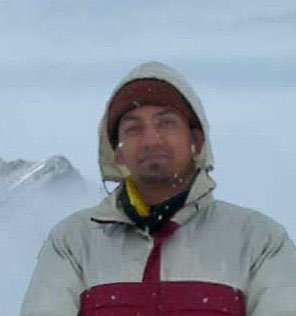I have the most boring paper tomorrow, and hence my mind is easily being distracted. A Few days back, I was surfing Orkut, (i.e. checking out random profiles) and I found this community for Infra Red Photography. I checked it out, and it had every thing, except anything on IR photography. The absence of anything worthwhile, planted a seed in my Brain. I had to find more about it.
I already know a few things about Infra red light and photography.
- Firstly, most CCD sensors can record IR light, but the lenses have special coatings, or special filters are used, to prevent the Camera from seeing this, for two reasons: You can see thru people's clothes using IR, and the IR light can totally mess up the 'in camera' calibrations.
- Secondly, Shooting in the Near Infra Red band can have its advantages. This is from Remote sensing that I have been studying. Water appears dark in the IR band, while Vegetation appears bright. This forms the basis of mapping out vegetation using Remote sensing data.
In my search, I came to know that the IR blocking filter is present only in the recent models. Now my camera is around 430 camera-years old, since I have been using it for the 5th year running, so in no way can it be called recent. Maybe I can after all do some Infra Red photography with it. I figured that since I was not going to study, I might as well do something constructive.
Firstly I checked whether my camera can see IR. This was achieved by using the most important invention ever manufactured, the humble TV remote control. The L.e.d. in the front gives out signals in IR, and hence can be used as an IR-only source. (Check it out. You should not be able to see the l.e.d. giving out light, when you hold it in front of your eyes)
Here is how the pulse appears to the naked eye

Here is how it appears to the Camera. (You can see a bright light emanating from the led)

Secondly I had to make a filter, which cut of the visible light, and allowed only IR to pass. I googled around, and found that you can use unexposed developed film, to make an IR pass filter.
So I searched high and low for some film of this kind, and finally found some.

On placing 2 layers in front of the lens, this is how the remote control signal appears.

Finally, after I figured out that it would work, I had to make a filter out of the film. I'll spare you the details, and just show you how it looks.
 Now I can just attach this to my camera lens, and am good to go.
Now I can just attach this to my camera lens, and am good to go.*
**
***
****
So I present to you, the World through IR light:
Here is how a Tungsten Bulb looks like:
 Look at these flowers
Look at these flowers In IR
In IR
Or these

In IR:

You will realise that what happens is, that the flowers, reflect very little IR, while the green leaves reflect a lot. Also the twigs, and the dry parts, that are in direct sunlight, reflect light throughout the spectrum, as can be seen in the normal as well as IR photographs
Now look at this place. Notice the white marble, the grass, as well as soil that can be seen.

When you see them in IR, you see that the marble reflects very little IR, while the Grass and Soil is almost indistinguishable.

Finally, the pièce de résistance:
You can see a variety of Objects in this Picture: Water in the swimming pool, the grass, trees, buildings, sunlight being reflected from glass...

Now look at them in IR
 Whooo!
Whooo!What they have been teaching us in Remote sensing is true...
~~~~~~~~~~~~
A note: I have a paper on Image Interpretation tomorrow. It deals with looking at satellite images, and then inferring from them what is on the ground. You can find out, not only whether it is agriculture or Forests, you can also tell which type of forest it is. If you are really experienced and skilled, you can even say what specie of tree it is. I am too bored to study it, and thought an experimental approach would help me get more marks. Let’s see whether this turns out to be true.
~~~~~~~~~~
P.S. This not meant to be an artistic post. It is to satisfy my geeky urges. And if you don't think, that making something on your own, finding new things, and using things in a way they are not intended to be, you are not a geek of my type. And if you haven't experienced the joy of seeing the theory working out in practice, I pity you. It’s one of the most beautiful things in the world.




4 Responses to "Infra Red Photography"
hey nice insight into IR photography.. was not aware of many of the facts stated in the blog!! hehe!!! hopefully we shall both pass in 2mrws paper haha
very good post! It is amazing how google can be of help in such pursuits.
That why I am a Google Worshiper!
hey thanx!!
Post a Comment